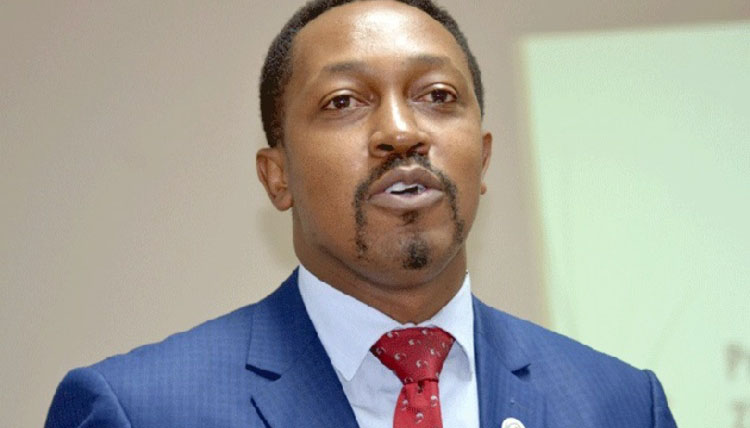
The Sunday Mail

Lincoln Towindo
Senior Reporter
A team of Zimbabwean experts is preparing to travel to the United Kingdom for a due diligence exercise required to positively identify several human remains believed to be of First Chimurenga heroes and heroines shipped as war trophies to Europe during the early years of colonial occupation.
Government has, for years, been pushing for the repatriation of dozens of skulls of First Chimurenga war heroes, who were beheaded by British invasion forces at the height of the first uprisings against colonialism, and are being held on display at some British museums.
Some of the skulls are believed to belong to Mbuya Nehanda, Sekuru Kaguvi, Chief Mashayamombe Chinengundu and Chief Makoni Chingaira, among others.
British authorities had earlier this year invited Zimbabwe to deploy a team of experts to verify the origins of a catalogue of skulls in March, but travel restrictions necessitated by the Covid-19 pandemic delayed the trip.
National Museums and Monuments of Zimbabwe (NMMZ) director Dr Godfrey Mahachi told The Sunday Mail that the team will be dispatched once travel restrictions are relaxed.
“Because of travel restrictions, our experts had to postpone the trip to the UK and wait for the situation to reach some kind of normalcy,” said Dr Mahachi.
“But this is something that clearly remains a priority. But now we are just waiting for the restrictions to be relaxed a bit more and once they signal that they are ready to receive us, then we will be travelling there.”
He said the experts will comb through a litany of historical documents and archival material held by British museums to ascertain whether the skulls originated from Zimbabwe.
“The purpose of travel is to do a due diligence exercise; a due diligence exercise in the sense that we want to establish whether what they have as human remains originated from Zimbabwe.
“We just don’t want to collect anything that is offered; we want to do an examination of the records to satisfy ourselves that they have skulls of Zimbabwean origin. Once we establish that, we then go to the issue of repatriation.”
UK Parliament
The issue came up for discussion in the British House of Commons a fortnight ago when parliamentarian Stephen Ferry asked the UK Secretary for Culture, Caroline Dinenage, about the progress on the repatriation of the war trophies.
“To ask the Secretary of State for Digital, Culture, Media and Sport, what progress is being made on the repatriation from the UK to Zimbabwe of the remains of (a) Mbuya Nehanda, (b) Sekuru Kaguvi and (c) the 25 First Chimurenga fighters,” asked Ferry.
Responding to the question, Ms Dinenage said: “It is not confirmed that the remains of Mbuya Nehanda, Sekuru Kaguvi and the 25 First Chimurenga fighters are held in a UK institution.
“If it was determined that they were in the UK, and a request for their return was received, the decision to do so would be a matter for that institution to consider.”
Last year, the National History Museum in London submitted a report to Zimbabwean authorities detailing the origins of several human remains they were holding as part of their catalogue.
The archival report, compiled by a team of British experts, traced the origins of individual skulls using documentation that was used at the time to facilitate the artefacts’ shipping to Britain.
The experts pored through numerous documents kept in historical archives in Britain and South Africa in order to ascertain the skulls’ positive identification.
As part of the process, the report details were then corroborated with locally available documentation before a consolidated report was drafted.
The skulls are expected to undergo DNA testing to verify who they belonged to.
During the First Chimurenga, British invasion forces publicly beheaded vanquished “troublesome” resistance movement leaders partly as a means to intimidate locals who were part of the struggle.
The decapitated heads were also used as trophies by the victors to collect hefty rewards from colonial authorities.
Chief Mashayamombe was one of the leading figures during the First Chimurenga, who had caused a lot of problems for the whites in the Mhondoro, Norton and Chegutu areas.
There had a bounty on his head.
Chief Makoni Chingaira, another one of the leaders in the Rusape area, was also killed by invading forces.
Records indicate that he was beheaded and his head taken away.
In 2011, the Namibian government carried out a similar exercise by repatriating dozens of human skulls and skeletons from former coloniser, Germany.
The remains were of the Namibian locals who died in a colonial concentration camp more than 100 years ago.
Their heads were seized for a research project that aimed to prove white supremacy.
The skulls were part of the anatomical collection of the Berlin University Hospital.
The skulls were taken to Germany after the slaughter of indigenous Namibians during an anti-colonial uprising in what was then called South West Africa, which Berlin ruled from 1884 to 1915. Following Germany occupation of their land, the Herero people revolted and the Nama tribe joined the uprising in 1905.
The colonial rulers responded ruthlessly and General Lothar von Trotha signed a notorious extermination order against the Hereros. Rounded up in prison camps, captured Namas and Hereros died from malnutrition and severe weather.
Dozens were beheaded after their death and their skulls sent to researchers in Berlin for “scientific” experiments.
Records show that up to 80 000 Hereros lived in Namibia when the uprising began. Afterwards, only 15 000 remained.



